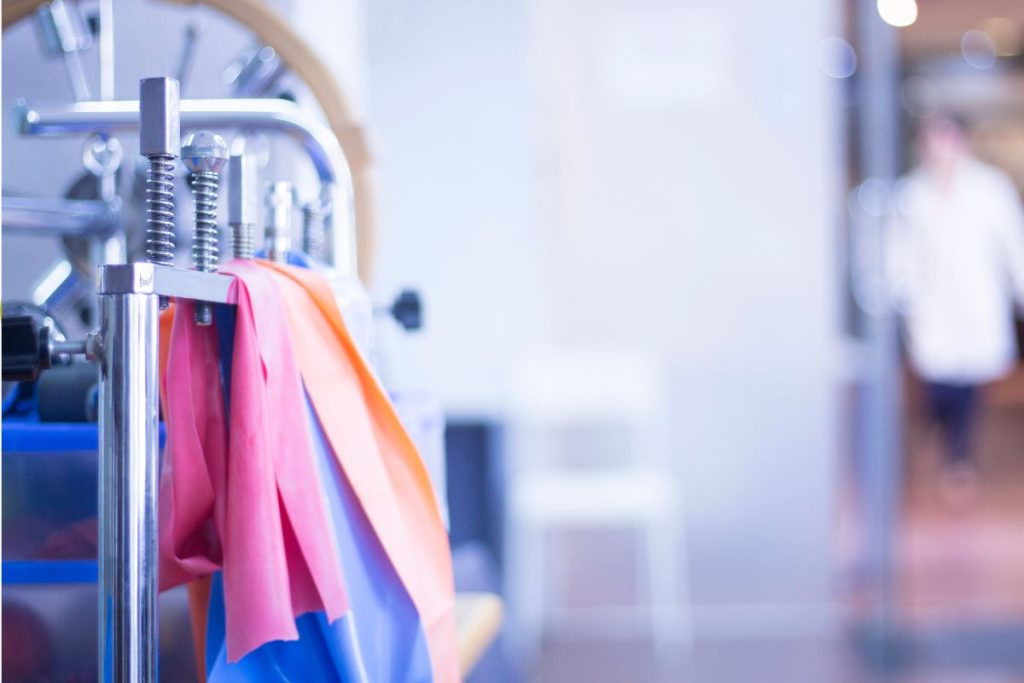Each year, 50% of all Americans over 18 will develop a musculoskeletal injury that lasts longer than three months, according to the United States Bone and Joint Initiative (USBJI). That’s more than a hundred million people who may need to see a physical therapist. The discipline of physiotherapy is evolving with the integration of new technologies, notably by using rubber in rehabilitation tools. These advancements enhance functionality and comfort, allowing for precise, tailored treatments. Rubber’s properties improve the durability and adaptability of devices, leading to more effective therapies and quicker recovery times, thus setting new standards in patient care.
Applying Technology to Modern Physiotherapy
The evolution of physiotherapy from traditional practices to those enhanced by technology has marked a significant milestone in healthcare. This shift is characterized by incorporating sophisticated tools that facilitate more precise assessments and treatments. Modern devices, many incorporating elements like rubber for better functionality and patient comfort, are equipped with sensors and software that provide real-time feedback and data-driven insights into patient progress.
Such technological enhancements increase treatment accuracy and enable therapists to tailor interventions more closely to individual needs. For instance, rubber-based wearable devices can monitor a patient’s movements and provide real-time feedback that helps correct postures or techniques. A 2024 study published in the Physical Therapy and Rehabilitation Journal highlights that technology in rehabilitation can reduce recovery times by up to 25%, a testament to its effectiveness.
Both patients and therapists benefit from these advancements. Patients experience more engaging, customized, and often shorter therapies, while therapists achieve better outcomes through enhanced tools, making the therapeutic process more efficient and effective.
Spotlight on Rubber: A Game Changer in Rehabilitation Tools
Rubber’s inherent flexibility, durability, and resistance make it an indispensable material in manufacturing physiotherapy tools. Its elasticity allows for equipment that can stretch and bend, mimicking natural movements and supporting a wide range of exercises essential for rehabilitation. Durability ensures these tools withstand repeated use over long periods, which is crucial for facilities managing numerous patients. Additionally, rubber’s resistance to wear and deformation under stress provides reliable performance in diverse therapeutic environments.
Rubber-Enhanced Tools Used in Therapy Practices
Integrating rubber-enhanced tools into existing physiotherapy routines can elevate the standard of care provided. Rubber, known for its flexibility, durability, and safe grip, is crucial in various physiotherapy tools. Therapists looking to incorporate these advanced tools should understand each item’s benefits and applications.
- Resistance Bands: These bands are staples in physiotherapy for strength training and flexibility exercises. They come in different resistance levels, allowing therapists to customize exercises according to patient strength and recovery stages. The versatility of resistance bands makes them suitable for a wide range of motion exercises and for patients at various fitness levels.
- Exercise Mats: Utilized primarily for safety and comfort during exercises, rubber mats are essential in any physiotherapy setting. They provide a non-slip surface that ensures stability and grip during balance and flexibility exercises, crucial for patients recovering from musculoskeletal injuries.
- Exercise Balls: Also made with rubber, exercise balls support a variety of exercises targeting core strength, balance, and flexibility. Their ability to engage multiple muscle groups simultaneously while providing a stable yet dynamic surface makes them particularly effective in rehabilitation scenarios.
- Rubber-coated Dumbbells: These are used for strength training and to improve muscle tone and endurance. The rubber coating protects the floor from damage and provides a comfortable grip, reducing the risk of slipping from the patient’s hands.
Each of these tools leverages the inherent properties of rubber to enhance the therapeutic effects of exercises. Therapists can provide more tailored, effective, and safe treatment plans by incorporating these rubber-enhanced tools into their practices. Such innovations ensure that patients receive the best possible care, maximizing the benefits of physiotherapy sessions.
Looking Ahead: The Future of Physiotherapy with Rubber Technology
The future of physiotherapy technology, particularly involving rubber, promises more adaptive and responsive tools that can significantly improve patient outcomes. As rubber technology advances, we can anticipate more sophisticated designs that offer greater precision in therapy. Tools currently being developed include smarter, more interactive rubber tools that seamlessly integrate with digital health platforms, enhancing tracking and therapy personalization.
For more information about the use of rubber in physiotherapy equipment and its benefits for patient outcomes, contact MWRC for assistance. Our expertise and commitment to quality enable us to help you make the right rubber choices for your products.
